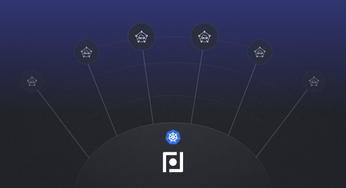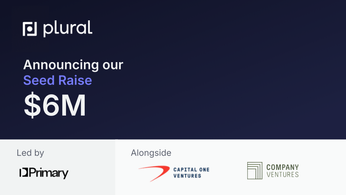
Proxmox vs. Kubernetes: Choosing the Right Platform
Learn how to run Kubernetes on Proxmox, comparing Proxmox vs Kubernetes for efficient container orchestration and virtualization in this comprehensive guide.
Table of Contents
Kubernetes and Proxmox: a powerful combination for containerization and virtualization. But how do you choose between Proxmox vs Kubernetes? This guide clarifies the roles of each, showing you how to leverage both for a robust, scalable infrastructure. We'll cover deploying Kubernetes on Proxmox, optimizing your setup, and address common misconceptions. Learn how to use Proxmox Kubernetes together and when to use each individually. Follow our practical steps for Kubernetes Proxmox deployments, including using Kubespray Proxmox, and build a foundation for your containerized applications.
Unified Cloud Orchestration for Kubernetes
Manage Kubernetes at scale through a single, enterprise-ready platform.
Key Takeaways
- Combine Proxmox and Kubernetes for efficient container orchestration: Proxmox handles the virtualization, while Kubernetes manages the containers within those VMs. This setup offers flexibility and efficient resource use. Use Proxmox's UI for VM management and Kubernetes for container orchestration.
- Prioritize high availability for production: A single-node Kubernetes cluster is unsuitable for production. Distribute your control plane and worker nodes across multiple Proxmox hosts or bare-metal servers. Implement robust monitoring and backups.
- Simplify Kubernetes management with the right tools: Use tools like
kubectl, Prometheus, and Grafana for monitoring and troubleshooting. Terraform and Kubespray can automate deployments. For large-scale deployments, consider a platform like Plural to streamline management.
Proxmox vs. Kubernetes: Choosing the Right Platform
While this blog post focuses on integrating Proxmox and Kubernetes, it's important to understand when each platform shines individually. Often, the question isn't Proxmox or Kubernetes, but rather how they can work together or if one is sufficient for your needs. A common strategy is using Proxmox for virtualization and then adding Kubernetes on top for container orchestration.
Kubernetes excels at managing complex, containerized applications at scale. Its strengths lie in features like automated rollouts, self-healing, and service discovery. However, this power comes with complexity. As noted in a Reddit discussion, even experienced Kubernetes administrators sometimes find it overwhelming for simpler setups. If you're running a few containers for personal projects, Kubernetes might be overkill. Docker Compose or even managing containers directly might be more practical.
Proxmox simplifies virtualization. Its user-friendly interface makes managing virtual machines and containers (using LXC) straightforward. Features like backups, high availability, and VM migration are major advantages for those wanting a robust yet easy-to-manage virtualization platform. If your primary goal is running virtual machines, and you don't need Kubernetes’s orchestration capabilities, Proxmox is an excellent choice. It's particularly well-suited for home labs or small-scale deployments where ease of use and comprehensive virtualization management are key.
Key differences between Kubernetes and Proxmox:
- Kubernetes: Open-source container orchestration platform, large community, highly scalable, complex.
- Proxmox: Virtualization platform for VMs and containers, user-friendly interface, robust management tools, simpler to deploy and maintain.
Performance considerations also matter. Kubernetes generally allows for higher container density—more containers per server. Proxmox, while not as dense for containers, offers features like CPU and memory pinning, beneficial for virtual machines with specific resource requirements. This dedicates hardware resources to specific VMs, ensuring optimal performance for critical workloads.
The best platform depends on your specific needs. If you need a complete virtualization solution with robust management tools and the ability to run both VMs and containers, Proxmox is a strong contender. If you need to orchestrate complex containerized applications at scale, Kubernetes is the better choice. And, as explored in this guide, combining the two offers a powerful and flexible solution for managing both virtual machines and containerized workloads. For managing Kubernetes at scale, consider a platform like Plural to streamline operations.
Kubernetes Explained
Kubernetes is an open-source platform designed for automating the deployment, scaling, and management of containerized applications. Think of it as an orchestration system that handles the complexities of running applications across a cluster of machines. Its modular architecture ensures resilience, scalability, and extensibility. A Kubernetes cluster consists of a control plane and one or more worker nodes. The control plane manages the cluster's overall state, while the worker nodes run your applications.
Understanding Kubernetes Architecture
Kubernetes is an open-source platform designed for automating the deployment, scaling, and management of containerized applications. It’s essentially an orchestration system that expertly handles the complexities of running applications across a cluster of machines. Its modular architecture ensures resilience, scalability, and extensibility, making it a popular choice for modern application deployments. A Kubernetes cluster consists of a control plane and one or more worker nodes. The control plane manages the cluster's overall state, making decisions about scheduling, resource allocation, and service discovery.
The worker nodes are the workhorses of the cluster, running your applications in containers. This separation of concerns between the control plane and worker nodes is key to Kubernetes’ power. It allows for horizontal scaling—simply add more worker nodes to handle increased traffic—and fault tolerance. If a worker node fails, the control plane can reschedule its workloads to other healthy nodes. For a deeper dive into Kubernetes architecture, see Plural's guide on Kubernetes management platforms.
Kubernetes Use Cases and Benefits
Kubernetes has become the industry standard for container orchestration, used across diverse industries and a wide range of applications. One compelling example is combining Proxmox with Kubernetes. Proxmox handles the virtualization layer, providing virtual machines, while Kubernetes manages the containers within those VMs. This offers flexibility and efficient resource use. Use Proxmox's UI for VM management and Kubernetes for container orchestration.
Beyond this, Kubernetes excels in scenarios requiring rapid scaling, high availability, and efficient resource utilization. Microservices architectures, cloud-native applications, and CI/CD pipelines all benefit from Kubernetes’ automated deployments, resource management, and application resilience. Whether you're deploying a web application, a machine learning model, or a complex data processing pipeline, Kubernetes provides the tools and infrastructure to manage containerized workloads effectively.
Kubernetes Limitations
While Kubernetes offers numerous advantages, it's important to understand its limitations. High availability for production environments is a key consideration. A single-node Kubernetes cluster isn’t suitable for production. Distribute your control plane and worker nodes across multiple Proxmox hosts or bare-metal servers for redundancy and fault tolerance. Robust monitoring and backups are also essential for stability and reliability. For production-grade Kubernetes deployments, consider a platform like Plural to streamline management and enhance security.
Another factor is the complexity of managing Kubernetes. While tools like kubectl, Prometheus, and Grafana simplify monitoring and troubleshooting, there’s a learning curve to mastering Kubernetes concepts and configurations. For large-scale deployments, the management overhead can be significant. Platforms like Plural can be valuable here, providing a centralized interface for managing multiple Kubernetes clusters and simplifying complex tasks like deployments, upgrades, and security policy enforcement.
What is Proxmox?
Proxmox VE is a powerful open-source platform for managing virtual environments. It combines Kernel-based Virtual Machines (KVM) and Linux Containers (LXC) to provide a flexible solution. Proxmox allows you to manage multiple hosts and set up virtual machines and containers. This makes it an attractive option for organizations looking for a cost-effective virtualization solution. You can explore community discussions and use cases on the Proxmox subreddit.
Understanding Proxmox Architecture
Proxmox VE (Virtual Environment) is built on Debian Linux, providing a stable and robust foundation. It leverages a web-based interface for managing virtual machines, containers, storage, and networking, making administration straightforward. Its architecture centers around two key virtualization technologies: Kernel-based Virtual Machines (KVM) and Linux Containers (LXC). KVM provides full virtualization, allowing you to run multiple operating systems simultaneously, each with dedicated resources. LXC offers lightweight containerization, ideal for running isolated applications with minimal overhead. This combination gives Proxmox the flexibility to handle a wide range of workloads.
Proxmox’s clustered architecture allows you to manage multiple physical servers as a single unit. This simplifies administration and enables features like high availability and live migration of virtual machines and containers between physical hosts. The central management interface provides a single pane of glass for monitoring and controlling all aspects of your virtual environment. Proxmox also integrates with various storage technologies, including local disks, NFS, iSCSI, and Ceph, giving you flexibility in how you store your virtual machine and container images. For a deeper dive, explore the Proxmox architecture documentation.
Proxmox Use Cases and Benefits
Proxmox shines in scenarios requiring full system virtualization, particularly when high availability is paramount. Its built-in clustering capabilities allow for seamless failover of virtual machines and containers, minimizing downtime. This makes Proxmox a strong choice for mission-critical applications and services. Beyond high availability, Proxmox offers robust management tools for tasks like backups, snapshots, and resource monitoring. These features simplify day-to-day administration and ensure the smooth operation of your virtual environment. It's a powerful, all-in-one solution for managing numerous virtual servers.
The platform's open-source nature translates to cost savings, as there are no licensing fees associated with the software itself. However, keep in mind that while community support is readily available, dedicated enterprise-level support is a paid service. Proxmox's versatility extends to supporting both virtual machines and containers, catering to diverse workload requirements. Whether you need to run a full-fledged Windows server or a lightweight microservice, Proxmox provides the tools to do so efficiently. This flexibility makes it an attractive option for organizations seeking a consolidated virtualization and containerization platform. Learn more about Proxmox.
Proxmox Limitations
While Proxmox offers a compelling set of features, it's important to be aware of its limitations. One notable constraint is that dedicated enterprise-level support requires a subscription. While community support is readily available, organizations requiring dedicated support may need to factor this into their budget. Additionally, while Proxmox excels at virtualization and containerization, it doesn't natively offer the advanced container orchestration features found in platforms like Kubernetes. For complex container deployments, integrating Proxmox with Kubernetes is often the preferred approach, with Proxmox providing the underlying virtualization layer and Kubernetes handling container orchestration. Understanding these limitations will help you determine if Proxmox aligns with your specific needs.
Proxmox vs. Traditional Virtualization
While Proxmox offers similar functionalities to platforms like VMware or Hyper-V, there are key differences. Proxmox VE's interface and feature set are distinct, which might require a learning curve for teams transitioning from these environments. Integrating external tools can provide more comprehensive insights and alerts, as discussed in this guide to Proxmox cluster monitoring. Understanding these nuances is crucial for effectively leveraging Proxmox.
Self-Hosting Considerations: Kubernetes, Proxmox, and Alternatives
Before diving into setting up Kubernetes on Proxmox, it's important to consider if this combination truly suits your self-hosting needs. While powerful, Kubernetes can be overkill for smaller setups. Many self-hosters find the complexity of managing Kubernetes outweighs its benefits when they only manage a few applications. A Reddit discussion highlights this sentiment, with even experienced Kubernetes administrators recommending simpler solutions for personal projects.
Why Kubernetes Can Be Overkill for Self-Hosting
Kubernetes shines in managing large, complex, distributed systems. Its features like automated rollouts, self-healing, and horizontal scaling are invaluable at scale. However, these features add overhead that might be unnecessary for a home server running a handful of applications. If you're just starting with self-hosting or have a limited number of services, the learning curve and maintenance required for Kubernetes can be substantial. For those looking to simplify Kubernetes management at scale, consider platforms like Plural which offer streamlined workflows and automation.
Simpler Alternatives: Docker Compose and Others
For simpler self-hosting setups, Docker Compose offers a lightweight alternative. Docker focuses on containerization, providing an easy way to package and deploy applications. Docker Compose simplifies managing multi-container applications, making it a great choice for smaller projects. Other alternatives include using just Docker or exploring tools like Nomad or Docker Swarm.
Proxmox Advantages for Self-Hosting
Proxmox excels at managing virtual machines and containers through its user-friendly interface. Its built-in features like backups and clustering make it a compelling choice for self-hosters. If you're looking for a platform to manage the underlying infrastructure for your self-hosted applications, Proxmox is a strong contender.
Built-in Backup and Recovery
Proxmox simplifies backup and recovery with its integrated tools. You can easily create snapshots and backups of your VMs and containers, ensuring data safety and facilitating quick restoration in case of failures. This built-in functionality reduces the need for third-party backup solutions, simplifying your infrastructure management.
Clustering Capabilities
Proxmox allows you to create a cluster of multiple physical servers, enabling high availability and distributed resource management. This clustering capability is valuable for self-hosters looking to build a resilient infrastructure. By distributing your workloads across multiple servers, you can minimize downtime and ensure continuous operation of your services.
Managing VMs and Containers
Proxmox supports both virtual machines (using KVM) and containers (using LXC), providing flexibility in how you deploy your applications. This dual capability makes it a versatile platform for various self-hosting needs. You can choose the technology that best suits your application's requirements, whether it's the isolation of a VM or the lightweight nature of an LXC container.
Proxmox Container Storage Model
Proxmox offers a flexible container storage model with options like directory, LVM, ZFS, or Ceph, allowing you to choose the best fit for your performance and resilience requirements. This flexibility allows you to tailor your storage solution to your specific workload needs, optimizing for performance or data redundancy.
Proxmox LXC vs. Docker Containers
While both Proxmox and Docker utilize containers, they differ in their approach. Proxmox uses LXC, which provides operating-system-level virtualization, while Docker uses application-level virtualization. This distinction impacts how resources are managed and isolated. Choosing between LXC and Docker depends on factors like resource utilization, isolation requirements, and the complexity of your application.
Ephemeral vs. Persistent Containers
Docker containers are often treated as ephemeral, easily replaced and rebuilt. This makes them ideal for stateless applications and CI/CD pipelines. Proxmox LXC containers, on the other hand, can be managed more like traditional virtual machines, with persistent storage and configurations, making them suitable for stateful applications and services requiring data persistence.
Performance and Scaling: Kubernetes vs. Proxmox
Kubernetes and Proxmox have different scaling models. Kubernetes excels at horizontal scaling, distributing workloads across multiple nodes. Proxmox typically scales vertically by adding resources to individual servers. The best approach depends on your application's architecture and resource requirements.
Bare Metal Performance
While Kubernetes can run on bare metal, it introduces an additional layer of abstraction which can impact performance. Proxmox, when used with KVM, offers near-bare-metal performance for virtual machines, making it a good choice for applications requiring maximum performance from the underlying hardware.
Container Density
Kubernetes generally allows for higher container density, packing more containers onto a single server due to its efficient resource management and orchestration capabilities. Proxmox, with its focus on VMs, might have lower container density when using LXC, as each container essentially runs within its own lightweight virtual environment.
Vertical vs. Horizontal Scaling
Kubernetes is designed for horizontal scaling, adding more nodes to the cluster as needed to handle increased traffic or workload demands. This approach provides greater flexibility and resilience. Proxmox typically scales vertically, increasing the resources (CPU, memory, storage) of existing servers. Vertical scaling is simpler but can be limited by the physical capacity of individual servers.
Resource Optimization with Proxmox
Proxmox allows for fine-grained resource allocation to VMs, optimizing resource utilization. Features like CPU and memory pinning ensure specific VMs receive the resources they need, preventing resource contention and ensuring consistent performance. This granular control over resource allocation makes Proxmox a good choice for environments with varying workload demands.
Kubernetes Alternatives
If Kubernetes feels too complex for your self-hosting needs, several alternatives cater to different needs and scales. These include platforms like OpenShift, Nomad, Docker Swarm, and more. Choosing the right alternative depends on factors like the size of your deployment, the complexity of your applications, and your team's familiarity with different technologies.
OpenShift, Nomad, Mesos & Marathon, Docker Swarm, Amazon ECS, VMware Tanzu, Netlify, Google Cloud Run, Incus (LXD), CloudFoundry, Docker, Rancher, and Azure Container Instances (ACI)
Each of these platforms offers a unique approach to container orchestration and deployment. Researching their strengths and weaknesses will help you choose the best fit for your specific requirements. Consider factors like ease of use, scalability, community support, and integration with other tools in your ecosystem.
Harvester: An Alternative to Proxmox
Harvester is a hyperconverged infrastructure (HCI) solution presented as a more user-friendly alternative to Proxmox, while still leveraging KVM virtualization. It's worth exploring if you're looking for a different HCI experience, particularly if ease of use and a modern interface are priorities.
Docker vs. Proxmox: A Detailed Comparison
Docker and Proxmox serve different purposes. Docker focuses on containerization, providing a lightweight and portable way to package and deploy applications. Proxmox provides a platform for managing VMs and containers, offering a complete virtualization solution. Understanding their differences is crucial for choosing the right tool for your specific needs.
Docker's Portability and Lightweight Nature
Docker's portability makes it easy to move applications between different environments, from development to testing to production. Its lightweight nature ensures minimal resource overhead, making it suitable for resource-constrained systems. This portability and efficiency make Docker a popular choice for microservices architectures and cloud-native applications.
Setting up Kubernetes with Proxmox and k3s
Now that we've explored the considerations, let's proceed with setting up Kubernetes with Proxmox using k3s, a lightweight Kubernetes distribution designed for resource-constrained environments and IoT devices.
Step-by-step guide for a mini PC setup
(Content for this section will be provided in a later step.)
Hardware Requirements and Power Consumption
(Content for this section will be provided in a later step.)
Deploying Kubernetes on Proxmox: A Practical Guide
Setting Up Your Proxmox Environment
Start by creating a virtual machine within your Proxmox environment. We recommend using Ubuntu Server for its stability and robust community support, but other distributions compatible with Kubernetes will also work. Allocate sufficient resources (CPU, memory, and storage) to this VM based on your anticipated workload. You can always adjust these later through the Proxmox UI. This interface also provides convenient performance monitoring and resource usage tracking for your virtual machines.
Installing Kubernetes Components on Proxmox
For this guide, we'll use kubeadm to bootstrap the cluster. First, install kubeadm, kubelet, and kubectl on your designated control plane node. Although high availability typically requires a minimum of three control plane nodes, we'll begin with a single control plane for simplicity. Later, you can expand to a multi-node control plane for production deployments. Choose a Container Network Interface (CNI); we suggest Calico for its flexibility and ease of use. Adding additional control plane and worker nodes is straightforward with kubeadm.
Configuring Your Kubernetes Cluster
On the master node, initialize the cluster using kubeadm init. This process generates a join command that you'll use on your worker nodes. Before joining the worker nodes, ensure that the necessary ports are open in your Proxmox firewall. Once the worker nodes have joined, verify the cluster status with kubectl get nodes. You should see all nodes in a Ready state. If you encounter issues with nodes not joining, double-check network connectivity and firewall rules. For a more declarative approach to cluster creation, consider tools like Terraform and Kubespray.
Networking for Kubernetes on Proxmox
After the cluster is running, configure your network. While Calico is our recommended CNI, other options like Weave Net or Flannel are also viable. Consider your specific networking requirements when making this decision. Ensure that pods can communicate with each other and external services as needed. You can use kubectl to inspect network policies and connectivity. For more advanced networking configurations, explore Proxmox's integration with Ceph, a distributed storage platform that can enhance both storage and networking flexibility. Remember that integrating Kubernetes with Proxmox and Ceph requires careful planning, especially concerning networking, storage, and resource allocation. For monitoring, consider tools that offer insights at both the container and node level. This granular view helps pinpoint resource-intensive containers and inform resource allocation decisions.
Kubernetes on Proxmox: Benefits and Challenges
Running Kubernetes on Proxmox combines the power of container orchestration with the flexibility of virtualization. This setup offers significant advantages but also introduces specific challenges.
Resource Efficiency and Scalability with Proxmox
Kubernetes is designed for scalability and flexibility, enabling efficient resource use. Proxmox adds a robust virtualization layer, letting you dedicate resources to your Kubernetes cluster. This maximizes resource usage and simplifies scaling applications. However, integrating these technologies requires careful planning, especially for networking, storage, and resource allocation. Consider the interplay between Proxmox's virtual resources and Kubernetes' resource requests and limits to avoid contention.
Simplified Kubernetes Management with Proxmox
Proxmox simplifies infrastructure management with its intuitive web UI. You can easily monitor VM performance and resource usage, streamlining tasks like provisioning and backups. Tools like Makoon further simplify Kubernetes resource management within Proxmox, reducing the need for complex command-line interactions.
Addressing Proxmox/Kubernetes Misconceptions
One misconception is that Proxmox and Kubernetes compete. They serve different purposes and work well together. Proxmox provides the virtualization layer, managing virtual machines and their resources. Kubernetes orchestrates containers within those VMs. Kubernetes' modular architecture lets it run on various environments, including Proxmox VMs and bare metal. Understanding this distinction is crucial for leveraging both technologies effectively.
Overcoming Proxmox/Kubernetes Hurdles
Running Kubernetes on Proxmox can present technical challenges. Managing Kubernetes at scale, especially across multiple environments, requires careful planning and robust tooling. Maintaining consistency across deployments can be complex. Effective monitoring of your Proxmox cluster and the Kubernetes workloads within it is crucial for identifying performance bottlenecks and ensuring application health. Addressing these challenges proactively creates a more stable and efficient deployment.
Best Practices for Kubernetes on Proxmox
Running Kubernetes on Proxmox gives you a flexible and cost-effective platform for container orchestration. However, like any infrastructure setup, it requires careful planning and execution. Let's explore some best practices to ensure your Kubernetes cluster on Proxmox runs smoothly and efficiently.
High Availability for Kubernetes on Proxmox
Avoid running all your Kubernetes nodes on a single Proxmox host. If that host fails, your entire cluster goes down. This setup is fine for testing, but unsuitable for production. For a production-ready setup, consider using separate bare-metal servers. A good starting point is three smaller servers for the control plane and three larger servers for worker nodes. This configuration provides redundancy and allows for horizontal scaling. If bare metal isn't feasible, ensure your Proxmox hosts are themselves highly available, perhaps using a cluster configuration with shared storage. You can find more discussion on this topic in this Reddit thread about Kubernetes and Proxmox.
Optimizing Kubernetes Performance on Proxmox
Monitor resource usage at both the container and node level. Granular visibility into resource consumption helps identify bottlenecks and optimize resource allocation. Tools like Prometheus and Grafana, integrated with your Proxmox setup, can provide this level of monitoring. This Proxmox monitoring guide offers valuable insights into optimizing performance. Keep an eye on Proxmox host resources as well. Overloaded hosts can impact the performance of the Kubernetes nodes they run. Regularly review your resource allocation and adjust as needed based on application demands. For more in-depth information on Kubernetes cluster monitoring, check out our blog post on the topic.
Securing Your Kubernetes Cluster on Proxmox
While Kubernetes offers security features, don't rely on it exclusively for application high availability. Design your applications with redundancy in mind. Implement strategies like replicating pods across multiple nodes to handle node failures gracefully. Secure your Proxmox hosts and the underlying network infrastructure. This includes implementing strong firewall rules, using secure SSH access, and keeping your systems updated. Consider network policies within Kubernetes to control traffic flow between pods and namespaces, further enhancing security. This Reddit thread on Kubernetes and Proxmox provides additional context on application high availability.
Managing Kubernetes Resources on Proxmox
Proxmox offers a convenient interface for managing your Kubernetes virtual machines. Use the Proxmox UI to monitor VM performance, resource usage, and overall health. Consider using infrastructure-as-code tools like Terraform to manage your Kubernetes cluster on Proxmox. Declarative infrastructure management simplifies cluster creation, updates, and scaling. Tools like Kubespray, often used with Terraform, can automate the Kubernetes deployment process on Proxmox. This GitHub project demonstrates using Terraform and Kubespray with Proxmox. This approach ensures consistency and reduces manual intervention. Plural offers a robust platform for managing Kubernetes deployments and infrastructure as code, simplifying these tasks. You can learn more about how Plural streamlines Kubernetes management by booking a demo.
Configuring and Customizing Kubernetes on Proxmox
After deploying Kubernetes on Proxmox, you'll want to configure and customize it for your specific needs. This involves choosing the right storage, implementing load balancing, and defining custom network policies to ensure your applications run smoothly and securely.
Proxmox Persistent Storage Options for Kubernetes
Persistent data management is critical for stateful applications in Kubernetes. Proxmox, with its integrated KVM and LXC, offers flexibility in choosing storage. You can use local storage on your Proxmox nodes or integrate with solutions like Ceph. Integrating Kubernetes with Proxmox and Ceph requires careful planning around networking, storage, and resource allocation. Consider performance, scalability, and cost when selecting your storage. For a highly scalable and resilient option, explore Ceph storage and Kubernetes on Proxmox. The right storage setup is fundamental for data persistence and application stability.
Load Balancing in Kubernetes on Proxmox
Efficient load balancing optimizes resource use and ensures high availability. Kubernetes offers excellent scalability and flexibility, enabling efficient resource use across diverse applications. Implement resource monitoring tools that provide insights at both the container and node level. This granular view helps identify resource-intensive containers and inform resource allocation decisions. Use Kubernetes' built-in features like Services and Ingresses to distribute traffic across your application pods. For more complex scenarios, consider Ingress controllers like Nginx or Traefik. Learn more about effective resource management and optimization with Kubernetes cluster monitoring.
Custom Network Policies for Kubernetes on Proxmox
Network policies are crucial for controlling traffic flow and improving security. Understanding Kubernetes' modular architecture is key to defining effective network policies. A Kubernetes cluster comprises a control plane and worker nodes, which manage the cluster's overall state. Network policies let you specify rules governing communication between pods and namespaces. By default, all traffic is allowed, but you can restrict access based on labels, namespaces, and IP addresses. The official Kubernetes documentation provides a comprehensive guide to implementing custom network policies for managing traffic and security. This lets you create secure and isolated environments for your applications, preventing unauthorized access and reducing security risks.
Monitoring, Maintaining, and Scaling Kubernetes on Proxmox
Once your Kubernetes cluster is running on Proxmox, ongoing monitoring and maintenance are essential for reliability and performance. This section covers best practices and tools to help you keep your cluster healthy and ready to scale.
Essential Tools for Kubernetes on Proxmox
Effective Kubernetes monitoring requires insight into both container and node-level resource usage. This granular view helps pinpoint resource-intensive containers and inform decisions about resource allocation. Tools like kubectl top provide a quick overview of CPU and memory consumption. For more comprehensive metrics and alerting, consider a monitoring system like Prometheus. Our guide on Kubernetes cluster monitoring offers a deeper dive into these tools and techniques.
Prometheus and Grafana for Kubernetes on Proxmox
Prometheus is a powerful monitoring system and time series database that pairs well with Grafana for visualizing metrics. This combination provides a robust solution for monitoring Kubernetes clusters, allowing you to track performance and resource usage effectively. Grafana's customizable dashboards let you visualize key metrics, set alerts for specific thresholds, and gain a comprehensive understanding of your cluster's health. Learn more about setting up and using Prometheus and Grafana in our Kubernetes cluster monitoring guide.
Backing Up and Recovering Your Kubernetes Cluster
Regular backups of your Kubernetes cluster are crucial for protecting against data loss. This includes backing up your etcd data, which stores the cluster's state and configuration. Several tools and techniques exist for backing up and restoring etcd, including using etcdctl snapshot save. Also, back up persistent volumes to protect application data. While monitoring is crucial for maintaining cluster health, explore external tools for deeper insights and customizable alerts, as discussed in this guide on Proxmox monitoring. A well-defined backup and recovery strategy is essential for minimizing downtime.
Planning for Large-Scale Kubernetes Deployments
Scaling your Kubernetes cluster on Proxmox requires careful planning. Managing Kubernetes at scale presents unique challenges, especially when maintaining consistency across multiple environments. Consider using a platform like Plural to streamline management and deployment workflows as your cluster grows. Plural offers features like GitOps-based continuous deployment, infrastructure-as-code management, and a self-service platform for generating Kubernetes manifests. These tools can simplify managing large deployments and help you scale your Kubernetes operations effectively.
Troubleshooting Kubernetes on Proxmox
Running Kubernetes on Proxmox, like any infrastructure project, presents occasional challenges. This section helps you troubleshoot common issues, find community support, and stay updated with the latest advancements.
Common Kubernetes on Proxmox Issues
When setting up your Kubernetes cluster on Proxmox, you might encounter issues such as nodes not joining the cluster. If this happens, double-check your network configuration and ensure the kubelet service is running on each worker node. On the master node, ensure your cluster is properly initialized and configured. For a deeper dive into Proxmox and Kubernetes, check out this comprehensive guide. Resource management is another common hurdle. Implement resource monitoring tools that offer insights at both the container and node level. This granular view allows you to pinpoint resource-intensive containers and make informed decisions about resource allocation.
Community Support for Kubernetes on Proxmox
The Kubernetes community offers valuable resources for troubleshooting and finding solutions. Tools like Makoon simplify Kubernetes management on Proxmox, offering a user-friendly interface for managing clusters and applications. Many organizations are working through similar integrations, as enterprises increasingly adopt Kubernetes and face the challenge of integrating it with legacy systems (discussed in this SiliconANGLE article). Don't hesitate to engage with the community through forums, mailing lists, and online groups.
Staying Up-to-Date with Kubernetes and Proxmox
The Kubernetes ecosystem is constantly evolving. Staying current with the latest releases, security patches, and best practices is crucial for maintaining a stable and secure cluster. Resources like this Proxmox monitoring guide and articles on integrating Proxmox, Ceph, and Kubernetes offer valuable insights. Subscribe to relevant blogs, newsletters, and community forums to stay informed.
Streamlining Kubernetes Management with Plural
Managing Kubernetes on Proxmox, especially at scale, can quickly become complex. This is where Plural shines. Plural is a unified cloud orchestrator designed to simplify and automate the lifecycle management of your Kubernetes deployments, regardless of where your clusters reside—whether on Proxmox, other cloud providers, on-prem, or even on your local machine.
Simplified Deployment and Management
Plural leverages GitOps principles for continuous deployment, ensuring that your Kubernetes manifests, whether written in Helm, Kustomize, or plain YAML, are consistently synced across your entire fleet. This eliminates manual updates and configuration drift, common pain points when managing Kubernetes on Proxmox via traditional methods. Think of it as infrastructure-as-code for your entire Kubernetes setup, similar to how you might use Terraform to manage your Proxmox infrastructure, but specifically designed for Kubernetes. Plural’s self-service code generation further streamlines deployments, allowing developers to easily deploy pre-configured applications and services without deep Kubernetes expertise.
Enhanced Security and Control
Security is paramount in any Kubernetes deployment. Plural enhances your security posture by providing a secure, SSO-integrated Kubernetes dashboard for troubleshooting and monitoring. This centralized dashboard gives you a single pane of glass to view the status of all your clusters, simplifying security audits and incident response. Because Plural uses an agent-based architecture, with egress-only communication from the workload clusters to the management cluster, you can manage even private or on-prem Kubernetes deployments on Proxmox without exposing internal cluster endpoints, similar to how you might secure your Proxmox hosts with strong firewall rules. This approach minimizes the attack surface and simplifies network security management.
Scalability and Flexibility
As your application grows, scaling your Kubernetes infrastructure on Proxmox becomes crucial. Plural is built for scale, using a distributed architecture that can handle large fleets of Kubernetes clusters. Plural Stacks, our infrastructure-as-code management tool, allows you to manage the Terraform configurations required for scaling your Proxmox infrastructure and the Kubernetes clusters running on it. This unified approach simplifies scaling and ensures consistency across your environments, addressing the challenges of managing Kubernetes at scale, as highlighted in our blog post on Kubernetes cluster monitoring. Whether you're running a small development cluster on a single Proxmox host or a large production deployment across multiple servers, Plural provides the tools and flexibility to manage your Kubernetes infrastructure effectively.
Related Articles
- The Quick and Dirty Guide to Kubernetes Terminology
- Kubernetes: Is it Worth the Investment for Your Organization?
- Alternatives to OpenShift: A Guide for CTOs
- The Essential Guide to Monitoring Kubernetes
- Multi-Cloud Kubernetes Management: A Practical Guide
Unified Cloud Orchestration for Kubernetes
Manage Kubernetes at scale through a single, enterprise-ready platform.
Frequently Asked Questions
Why should I run Kubernetes on Proxmox?
Combining Kubernetes with Proxmox gives you a flexible and scalable platform for managing containerized applications. Proxmox handles the virtualization layer, providing the underlying infrastructure for your Kubernetes cluster, while Kubernetes orchestrates your applications within that infrastructure. This combination offers resource efficiency, simplified management through Proxmox's web UI, and the ability to scale your applications as needed.
What are the main challenges of running Kubernetes on Proxmox?
While this setup offers many advantages, it's important to be aware of potential challenges. Managing Kubernetes at scale, especially across multiple Proxmox hosts or a combination of Proxmox and other infrastructure, can become complex. Ensuring high availability and implementing robust monitoring are crucial for production deployments. Additionally, integrating storage solutions and configuring networking require careful planning.
How do I choose the right storage for my Kubernetes cluster on Proxmox?
Proxmox offers flexibility in storage choices. You can use local storage on your Proxmox nodes, but for better resilience and performance, consider a distributed storage solution like Ceph. Ceph integrates well with both Proxmox and Kubernetes, providing a scalable and reliable storage backend for your applications. The choice depends on your specific needs and budget, balancing performance, scalability, and cost.
What are the best practices for securing my Kubernetes cluster on Proxmox?
Securing your cluster involves multiple layers. Start by securing the Proxmox hosts themselves with strong passwords, firewall rules, and up-to-date software. Within Kubernetes, implement network policies to control traffic flow between pods and namespaces. Regularly update your Kubernetes components to patch security vulnerabilities. Consider using security scanning tools to identify and address potential weaknesses.
How can I scale my Kubernetes cluster on Proxmox?
Scaling involves adding more worker nodes to your cluster. You can create new VMs within Proxmox and join them to your existing Kubernetes cluster. For larger deployments, consider using infrastructure-as-code tools like Terraform to automate the process of creating and managing your nodes. Using a platform like Plural can simplify scaling and other management tasks, especially for complex deployments.
Newsletter
Join the newsletter to receive the latest updates in your inbox.









